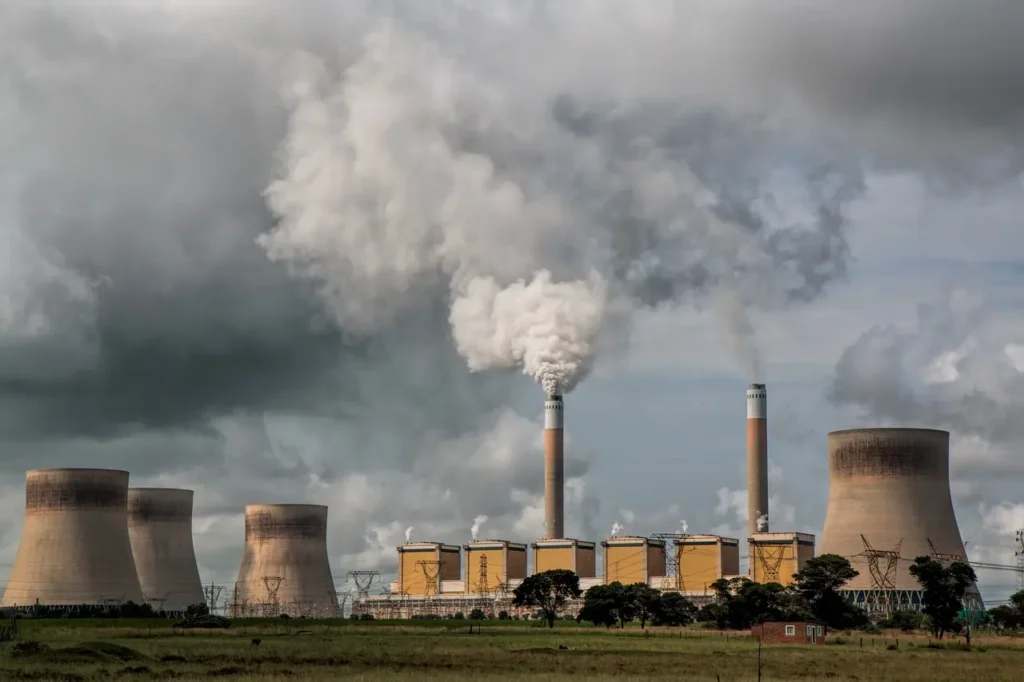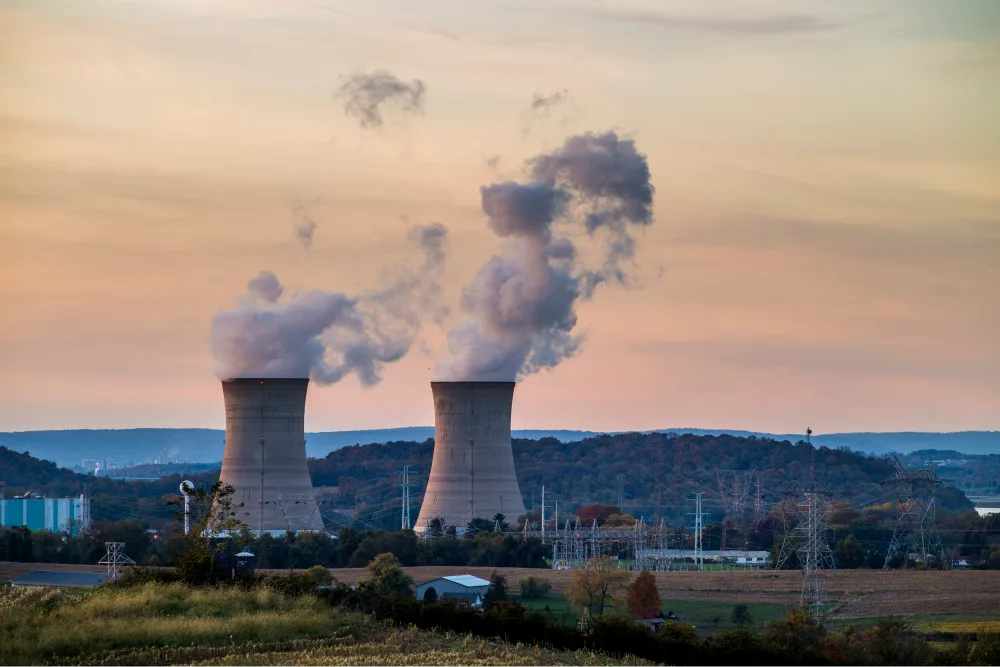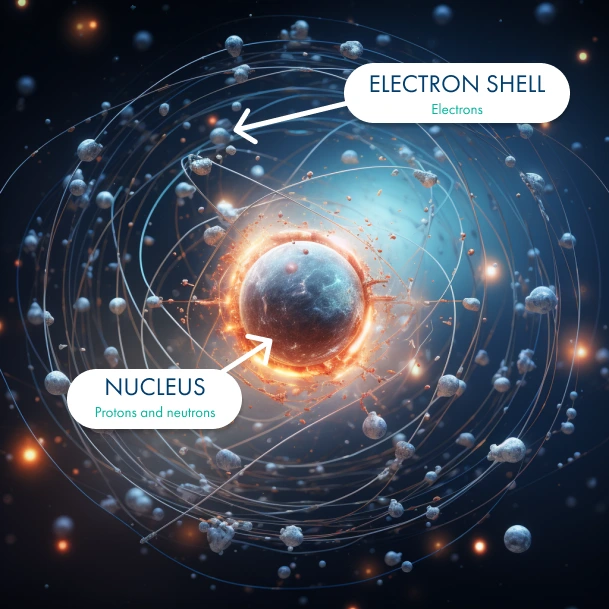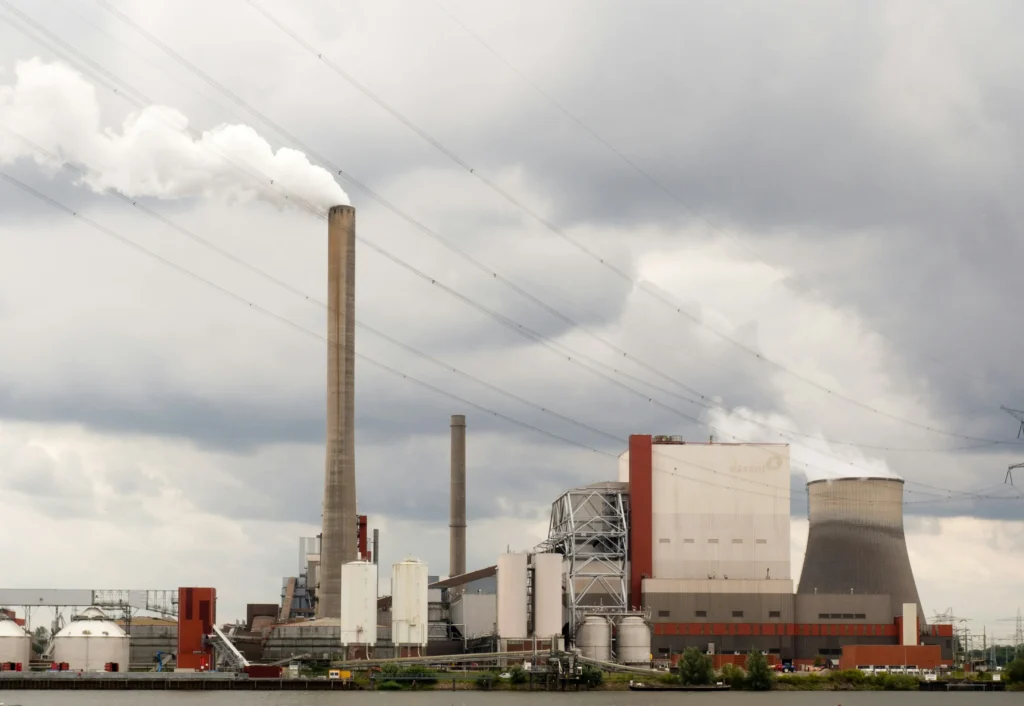
What Is Nuclear Energy?
2 minute read • Last update January 2024

In this article
How Does Nuclear Energy Work?
Nuclear energy refers to the energy associated with the nucleus of an atom. The nucleus is the center of the atom where the neutrons and protons reside. During fusion and fission reactions, nuclear energy is released. Fusion occurs when atoms combine and fission occurs when atoms split. Nuclear energy from fission reactions has been a significant source of electric power in the United States for over 60 years.
The Science Behind Nuclear Energy
Nuclear energy is based on the principles of nuclear physics and the phenomenon of nuclear reactions.
At the core of an atom, there is a dense nucleus composed of positively charged protons and uncharged neutrons. Two main types of nuclear reactions are relevant for energy generation: nuclear fission and nuclear fusion.

In the fission process, the nucleus of a heavy atom, such as uranium-235, is split into two smaller nuclei, releasing a large amount of energy. This energy is harnessed as heat, which is then used to generate steam and drive turbines connected to electrical generators.
Fusion involves combining the nuclei of light atoms, such as hydrogen isotopes, to form a heavier nucleus. Fusion reactions release even more energy than fission, but they require extremely high temperatures and pressures, similar to those found in the core of the sun. Achieving controlled fusion reactions for practical energy production is still a significant scientific and technological challenge.
How Do Nuclear Power Plants Work?
Nuclear power plants utilize controlled nuclear fission reactions to produce heat. The heat is transferred to a coolant, typically water, which circulates through the reactor core, absorbing the released energy. The heated coolant then produces steam, which drives turbines and generates electricity.
The development of nuclear power began with the establishment of regulatory frameworks and the construction of the first commercial nuclear power plant in Pennsylvania in 1957. The industry experienced significant growth during the 1960s and 1970s, with numerous reactors being built across the country.
However, recent years have seen delays and cost overruns in new nuclear projects. Nonetheless, there is hope for a boost in nuclear power this year with the start-up of two new reactors at Plant Vogtle in Georgia. The first reactor has already begun testing, and commercial operation is expected to commence soon.
Learn More About Nuclear Energy
Frequently Asked Questions About Nuclear Power
Can nuclear energy be considered a long-term sustainable solution for meeting the world’s energy needs?
Nuclear energy has the potential to be a long-term sustainable solution for meeting the world’s energy needs. It is a low-carbon energy source with large-scale electricity generation capabilities. Nuclear power plants can operate continuously for extended periods, providing a stable and reliable energy supply.
What is the current global capacity and usage of nuclear energy, and how is it expected to change in the future?
As of now, nuclear energy provides approximately 10% of the world’s electricity generation capacity. There are over 440 nuclear reactors operating in around 30 countries. Some countries are expanding their nuclear power programs, while others are transitioning away from nuclear energy. The development of small modular reactors (SMRs) and advancements in reactor technology may also influence the future capacity and usage of nuclear energy.
How does nuclear energy impact the economy, including job creation and energy security?
Nuclear energy has a significant impact on the economy, including job creation and energy security. According to the Nuclear Energy Institute, the nuclear industry supports over 500,000 jobs in the United States. Nuclear energy is also a reliable source of energy that can help to reduce the country’s reliance on imported oil. The United States currently imports about 60% of its oil, and this reliance makes the country vulnerable to disruptions in the global oil market. Nuclear energy can help to reduce this reliance by providing a domestic source of energy.
Are there any international regulations or agreements regarding the use of nuclear energy?
Yes, there are several international regulations and agreements governing the use of nuclear energy. The International Atomic Energy Agency (IAEA) sets standards and guidelines for nuclear safety, security, and non-proliferation. The Nuclear Non-Proliferation Treaty (NPT) aims to prevent the spread of nuclear weapons while promoting the peaceful use of nuclear energy.
How does nuclear energy contribute to reducing greenhouse gas emissions and combating climate change?
Nuclear energy is a low-carbon energy source that plays a significant role in reducing greenhouse gas emissions and combating climate change. Nuclear power plants generate electricity through the process of nuclear fission, which does not produce carbon dioxide (CO2) or other greenhouse gasses during operation. By replacing fossil fuel-based power generation with nuclear energy, countries can significantly reduce their CO2 emissions and mitigate the effects of climate change.
Written by Graham Lumley
Graham Lumley, Digital Marketing Manager at BKV Energy, leads digital and traditional marketing strategies, focusing on educating Texans about the state's deregulated energy market. With over 8 years of marketing experience, he creates content to help consumers understand and save on their energy bills, bringing a fresh and dynamic approach to the industry.
Related articles

Is Coal Renewable?
3 minute readCoal is a natural energy source that has played a crucial role in powering human development for centuries. It forms deep within the Earth over millions of years through an intricate process involving the decomposition of plant material under heat and pressure. Despite its natural formation, the process is too…
Get $50 off your electric bill!
Use code BKVEJOINUS50
Enter your zip code to shop BKV Energy's affordable, fixed-rate Texas electricity plans. Use the promo code for $50 off your electric bill.
